Stan Utley has achieved legendary status on the PGA tour, primarily because of his outrageously good short game. Most professionals hit the ball a country mile off the tee, but not Mr Utley. He used his amazing short game to compensate for his lack of distance, becoming an up and down machine.
In this review of his book, “the art of the short game”, I will be unpacking quite a few of his main ideas, with a few comments on my ability to actually integrate them into my game. Before we begin, it’s worth pointing out that Stan Utley holds the PGA tour record for the least number of putts over 9 holes. To be more precise, he only required 6 putts over 9 holes at the 2002 Air Canada Championship. That’s a complicated way of saying that he chipped in 3 times in 9 holes, and 1 putted every green in that 9 hole passage of play. So let’s just say that this is a guy who can practice what he preaches.
Some background into my short game struggles
I’ve been playing golf for about 17 years, and I currently hover between a 3 and a 6 handicap. In all this time, I’ve never established a baseline level of confidence with short shots that require less than a full swing. In essence, my chipping has always hovered between “OK” and “Dodgy AF”. I have yet to eliminate fat pitches from my game, and I still get nervous over short chips.
At this point in my golf career, I rely on solid driving and accurate iron play to shoot low scores.
When I miss a green, my heart sinks, because I know it’s almost a guaranteed bogey (I probably get up and down about 30% of the time). So basically, there was very little risk when buying this book, and potentially a massive reward. Mr Utley makes some very bold claims about how much he can improve your short game, in a very short space of time, if you just put his techniques to work.
I wasn’t completely sold, but I decided to give it a solid go.
Key Chapter Summary – The Art of Chipping
To start the summary of this chapter, I’m just going to lay down a bunch of relevant quotes. I will then dive into my understanding of the chipping technique that Stan Utley teaches.
I’d estimate that the average 12 handicapper hits eight or ten chip shots in a round. I’d also say that he might get up and down once or twice out of those 10 chances.
Stan Utley
It’s a realistic goal for you to get up and down from around the green 50 percent of the time. If you can get up and down 50 percent of the time, your’e going to take three to five shots off your handicap.
Stan Utley
For a chip, my feet are about four to five inches apart. More importantly, I don’t open my stance at all, or turn my foot out toward the target.
Stan Utley
I want my club to bottom out past the ball on a chip, so I make sure to setup with my weight favoring my left side, and I keep it that way throughout the swing.
Stan Utley
Players have always been taught to set up open to hit a chip shot, with the ball played back in the stance. This encourages a steep backswing outside the target line, and a chopping move down to the ball.
Stan Utley
Once you get the feel for activating your lower body back and through, some exciting things will start to happen. First, the chain reaction of your lower body working with your lagging uper body will help you hit the ball further with much less effort and armswing. Your ‘impact condition’ how pure and cleanly you hit the ball, will improve dramatically. When you start to sense that the ball is going a consistent distance with a given amount of effort, you’re going to get really good, really fast, at judging how hard to hit a chip or pitch.
Stan Utley
The Art of Chipping – Summary of Utley’s Method
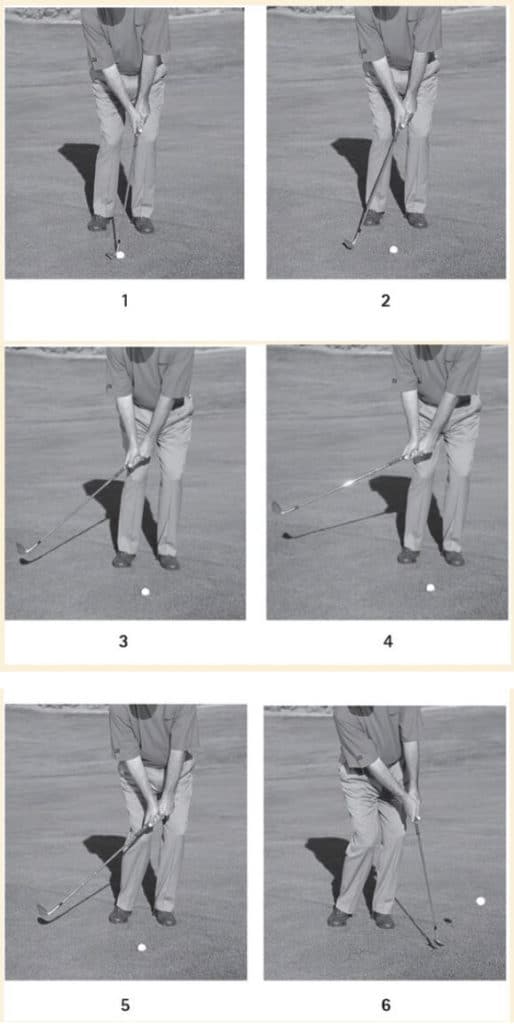
- Setup with your weight and spine tilt to the left, toward the target. This will level out your shoulders, and make it much easier to to make solid contact with the ball.
- Hit the ball by turning and pivoting, not tilting and scooping.
- The club must hit the ball, and then the ground (ie the club must bottom out past the ball).
- Deloft the club with a slight forward shaft lean (still not nearly as much shaft lean as most people advocate).
- The grip of the club moves very little (small arc). The clubhead moves a lot (big arc).
Things You Shouldn’t Do When Chipping
Don’t open your stance.
Don’t take the club outside the target line like a cut swing.
Don’t chop down on the ball.
NB – Never shift back on a chip shot.
A lot of people (including me) have a this ‘shift back’ impulse. Shifting back during the follow through (pointing your spine away from the target) ecnourages you to hit the ground before the ball (ie super fat). Or you overcompensate by shifting forward and altering the bottom point of your swing.
When practicing, do your best to identify if you have this impulse. Whenever I find myself losing control over my short chips, it’s usually because my spine angle is breaking down, and things start shifting all over the place.
Key Chapter Summary – The Art of Pitching
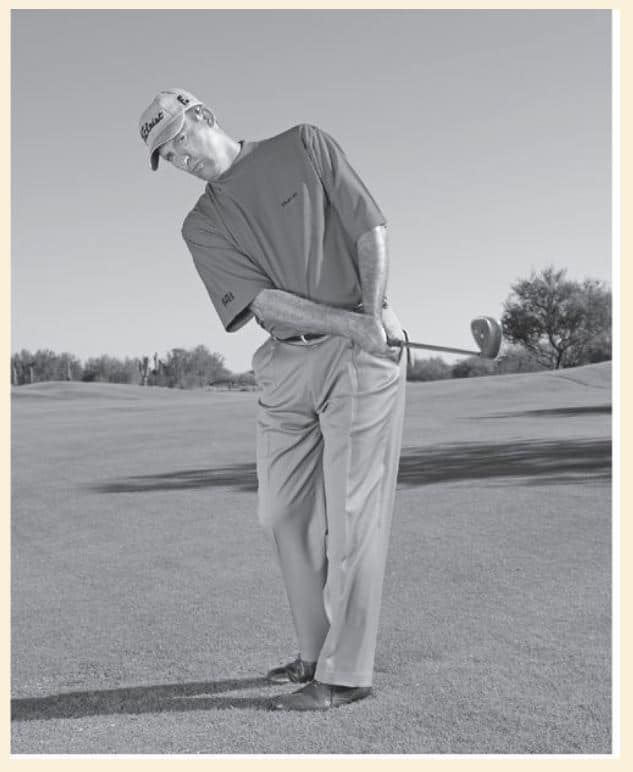
I define a pitch shot as a shot where you’re using the bounce on the bottom of the club (instead of the leading edge) and then releasing your hands through impact to make the ball fly up in the air.
Stan Utley
With a pitch shot, I’m letting the loft do the work, so that the ball flies high and lands soft. It’s a great weapon.
Stan Utley
The main thing that will be different in your pitch setup compared to the chip setup is how you set the shaft at address. On a chip shot, your hands are further ahead of the ball and you hit the shot with the grip end of the club leaning forward. The club hits the ball fast, and then the leading edge comes into contact with the ground. On a pitch shot, the hands are still a bit ahead at address, but the shaft is closer to vertical. You’re hitting the ground with the bounce on the bottom o fthe club, and using loft to send the ball up into the air.
Stan Utley
The key “Eureka” moment for the average guy happens when he feels the clubhead unload on the downswing, because the wrists actively unhinge. Unloading the clubhead puts the bounce into the turf nicely, and shoots the ball up into the air.
Stan Utley
The Art of Pitching – Summary of Utley’s Method
- For a 15 yard pitch, your feet should be about 4 or 5 inches apart. For a 40yard pitch, your feet should be a bit less than hip width apart.
- Start with your weight on your left, toward the target, and maintain this throughout the swing.
- Setup square to the target (ie don’t setup open like everyone else tells you to)
- Establish your left leg as a fixed pivot point in the ground. Turn around your left leg back and through.
- You must hinge your wrist (ie add wrist cock) on a pitch. Imagine hinging and releasing a sledge hammer.
- It might take some time to co-ordinate your pitch release with your lower body pivot. That’s okay.
Key Chapter Summary – The Art Of Bunker Play
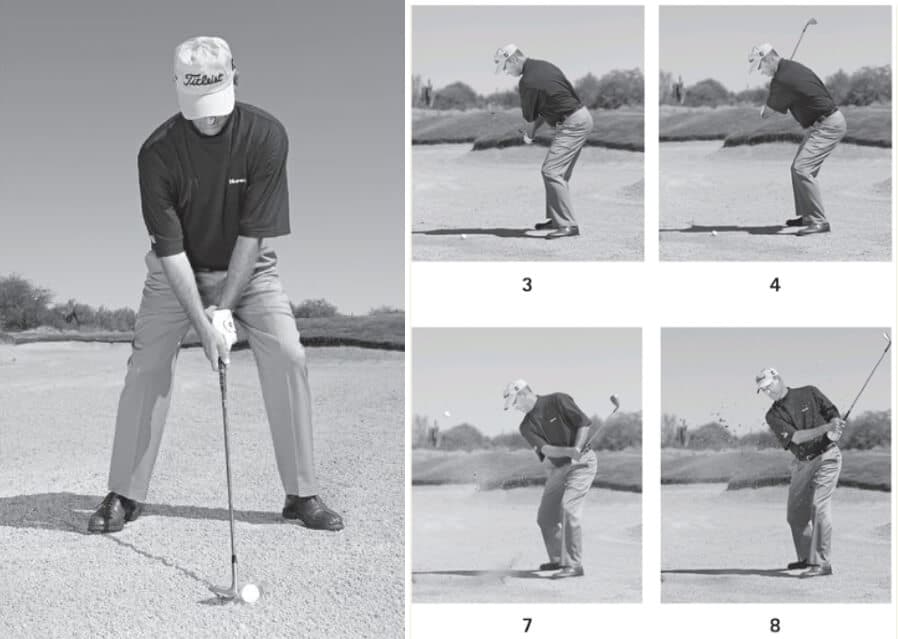
Before I dive into Utley’s method for bunker shots, it’s worth mentioning that this is the only part of his method that I have found pretty difficult to implement. This is partly because I haven’t spent enough time practicing his technique, and partly because it’s just so different to what I’ve been doing for the past 10-15 years.
Everything I teach about the bunker shot, from the setup to the swing, is designed to get the bounce on the back of the wedge working the way it was designed to.
Stan Utley
As hard as it might be to believe, if you have generic 10 yard bunker shot, you should be setting up square to your target line.
Stan Utley
When I tell somebody to tilt his weight forward, his first move is almost always to slide his hips toward the target, and tilt his spine back, away from the target.
Stan Utley
Once you get how the sand wedge design can help you hit a bunker shot, all it takes is a feel for how to release the clubhead into the sand, and you will get the ball out every single time. It’s as close to a magic bullet as I’ve seen in golf.
Stan Utley
Traditional Bunker Shot Advice
- Open up your stance
- Open up the club face
- Play a massive outside in cut swing
- Hit the sand 2 inches behind the ball
Stan Utley Bunker Shot Advice
- Feet wider than driver width apart, almost as if you’re sitting in a chair.
- Ball position under left arm pit
- Weight is on your left foot
- Clubface square/slightly open
- Setup square to the target
- Setup far away from the ball
- Your hands should be low to the ground
- Tilt your spine to the left (ie toward the target)
- Maintain your tilted spine angle throughout the shot
- Your hands must be BEHIND THE BALL (this increases the loft and exposes the bounce of the club)
- Make a narrow swing
- The clubhead passes the hands before you hit the ball/sand (ie the opposite of traditional shaft lean at impact)
- Don’t drop the right shoulder during the follow through
- Hit about an inch behind the ball
- The ball should come out high and land soft. If it doesn’t, there’s probably an issue with your setup or your understanding of the technique.
Spine Tilt Toward the Target Is Super Important
So much of what I see in the short game seems to be a player’s subsconscious telling him to to get a pitch or chip up in the air. When you subconsciously try to get the ball in the air, you usually get your body tilting back, away from the target, the shaft of the club tilting back and the hands breaking down and scooping to try get loft. All of those things are the opposite of what really makes the ball go up in the air.
Stan Utley
I teach that you setup with your weight and spine tilt to the left, toward the target, and hit the ball by turning and pivoting, rather than tilting and scooping.
Stan Utley
This is definitely the idea that has made the biggest impact on my short game. After practicing chipping in my backyard (I have a small patch of fake grass), I went to practice at the short game section of my home club.
I couldn’t believe how solid my contact was. I still hit a few fat shots and a few thin shots, but my frequency of “solid contact chips” went through the roof. For the first time in a long time, I actually enjoyed practicing my short game.
When I shifted from chipping to pitching, I didn’t hit a single fat shot. This was incredibly satisfying. Usually it’s only a matter of time before a few fat pitches hurtle into my practice session and deflate all my confidence. But not this time. When I left the range that day, it was like the weight of my average short game technique had finally been lifted off my shoulders (with the exception of bunker shots).
Is Utley the only guy promoting spine tilt toward the target?
Nope. Mike Malaska also advocates this idea for chips and pitches in his book “I feel your pain – Let’s make golf uncomplicated”. If you don’t believe me, take a look at these screenshots from that very book.
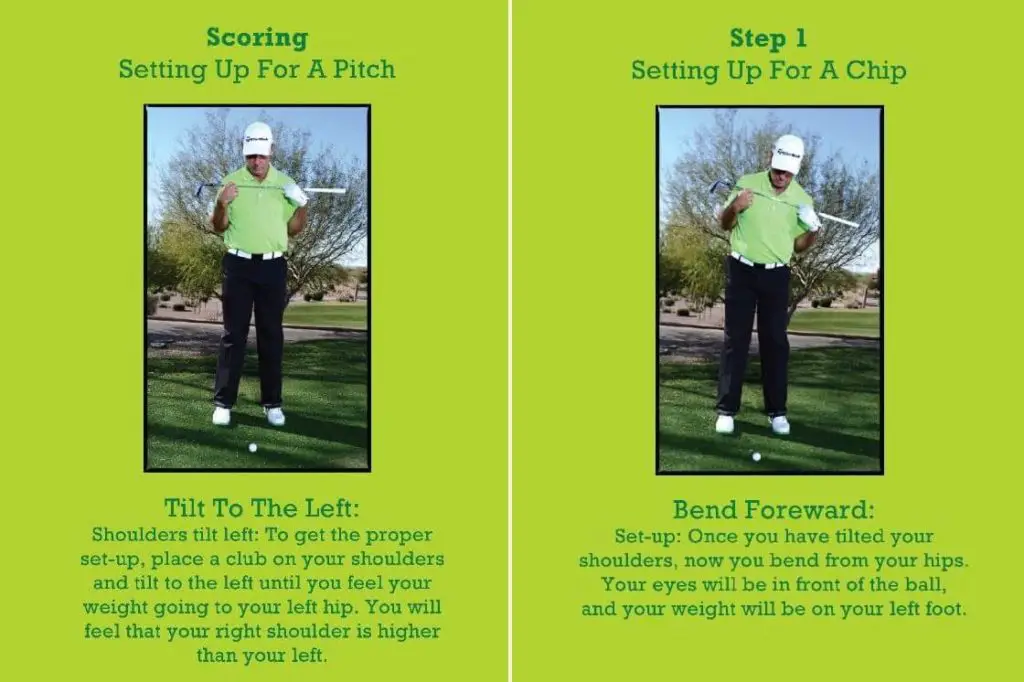
Final Thoughts
All in all, I’m pretty happy with my decision to purchase Utley’s book. Integrating his ideas on spine tilt when chipping and pitching quite literally improved my confidence overnight.
I still need to get a few more rounds under my belt to see if these ideas hold up under pressure.
With that being said, I’m quite optimistic about my short game at the moment. My technique is significantly better than it used to be. Instead of applying an outdated, false maxim (hips open, ball back in the stance and borderline ridiculous shaft lean), I’m actually doing something that works (tilting my spine toward the target, and pivoting around my left leg properly.
Ultimately, I would definitely recommend this book to anyone that is struggling with their short game. You have very little to lose, and a bunch of shots to shave off your score if Utley’s techniques work for you.

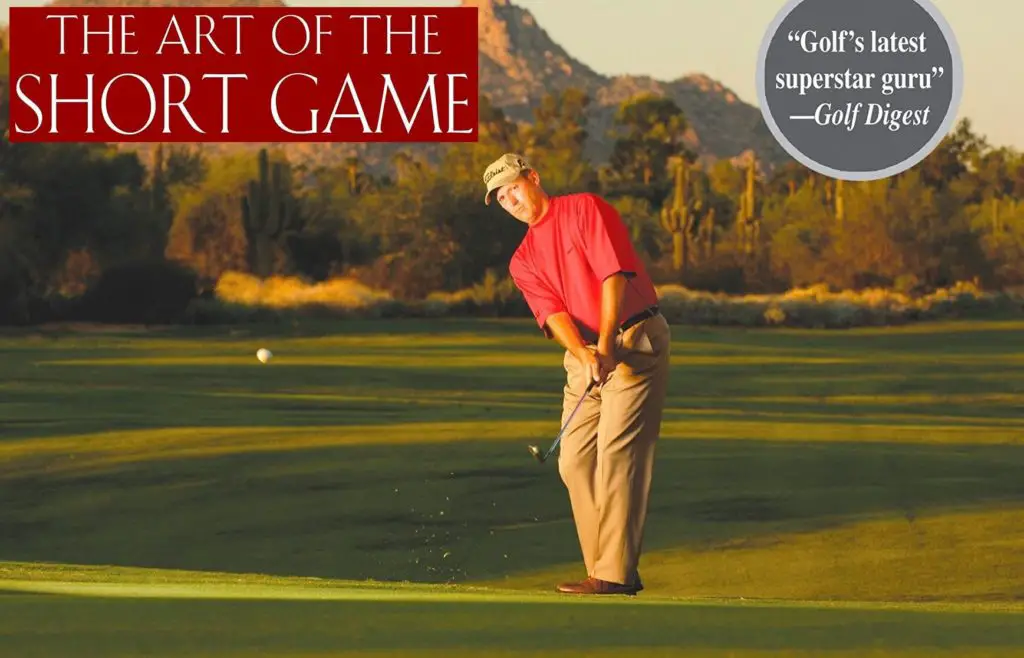

Pingback: Orange Whip Wedge Review - By A 5 Handicap Golfer
Pingback: The Ultimate Guide To Chipping Left Hand Low